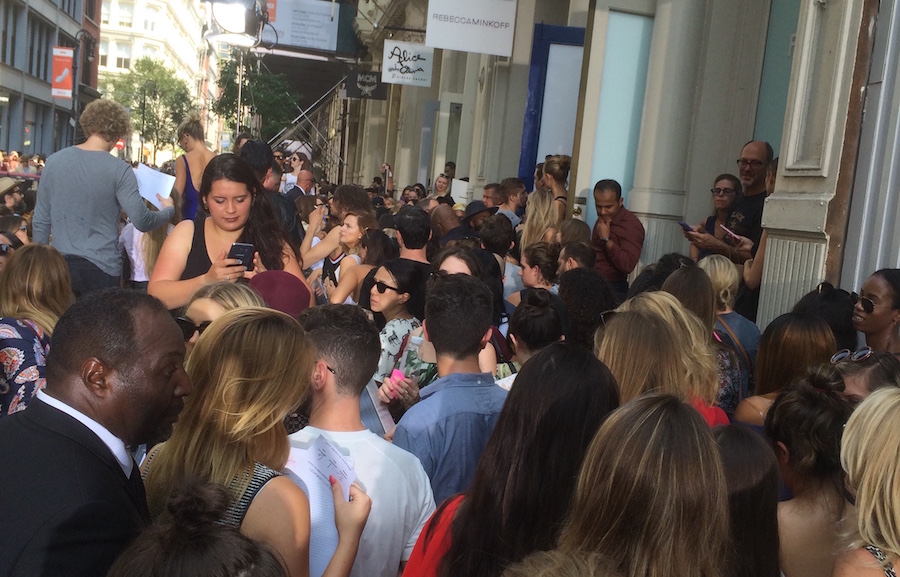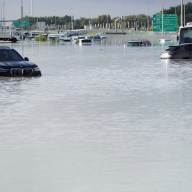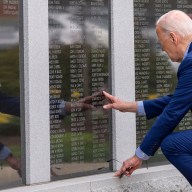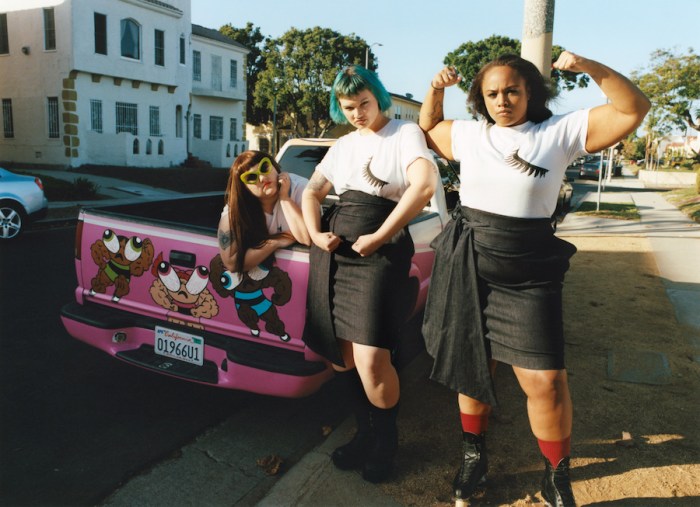If popular millennial designer Rebecca Minkoff was aiming for “disruption,” with her fashion runway show in SoHo last Saturday; many local residents would say she succeeded.
Minkoff was likely referring to shaking things up from a business perspective when she told media outlets that Fashion Week was “broken” and that she needed to reinvent the fashion show concept. Butmany local residents saw the event—which closed down part of Greene Streetfor a fewhours—as a major disruption to daily life, snarling traffic, overwhelming neighbors with loud music and rendering sidewalks nearly impassable. Fashion Week in the city officially ended on Thursday.
“Our prediction came to fruition, the event was a chaotic nightmare,” said Sean Sweeney, director of the SoHo Alliance and also a resident of Greene Street.
“The sidewalks on Greene Street were completely impassable,” he recalled. “Gridlock extended for a quarter mile or fiveblocks from Greene Street down to Grand Street and even to Broome Street, near the entrance to the Holland Tunnel.” The event, held to showcase Minkoff’s fall collection, was staged in front of the designer’s retail shop at 96 Greene Street and featured runway models on a narrow, 11-foot sidewalk and the closure of the entire length of Greene Street from Canal to Houston Streets to all vehiculartrafficfor a one-block, 15-minute sidewalk show. Seating was arranged in the middle of Greene Street for close to 550 guests and standing room for 250 more. There were also street musicians, 10-foot lighting stands, a generator and a food truck for guests. The Alliance said the permit was granted over the strong objections of Community Board 2 and dozens of residents who wrote to, and appeared before, the community board in August to protest the granting of the permits. The Alliance said the Mayor’s Office “ignored the community board’s recommendation and did not have the courtesy to even inform the board of its decision,” adding that residents learned of the decision to allow the event in a fashion publication, an indication of the administration’s insensitivity to its constituents. SoHo resident Susan Fortgang was not a fan of Minkoff’s show. “As long time residents of Greene Street, we strongly object to the greedy, selfish ‘fashion week’ proposal that promotes a private brand at the expense of everyone else in SoHo.” Terri Cude, a member of Community Board 2, said she saw both a fire truck and ambulance have difficulty navigating Greene Street and were only able to get through with the help of police officers.
In addition, she said, there were supposed to be pedestrian pathways open for residents, but immediatelybefore the show until well after, the sidewalk on the east side was completely impassable.
“Residents of this mixed-use community were unable to get around their own neighborhood,” Cude said.
Minkoff did not respond to several requests for comment.
The city didn’t seem to share SoHo residents’ opinions.
“The Mayor’s Office of Citywide Event Coordination and Management works with Community Boards and BIDs throughout the city to ensure events run safely and smoothly, and we work with the NYPD to ensure there is constant traffic flow,” said Michael Carey, executive director of the Mayor’s Office of Citywide Event Coordination and Management. “This event, which was presented to the Community Board by a local sponsor, was very brief and did not cause excessive noise or disruption in the area.”
Some shop owners, however, did favor the event.
“This is a good idea,” Khoa Ngyen, manager of the Christian Dior store on Greene Street, told the New York Post. “They are keeping the sidewalk open, so it might draw more traffic to the store.” Minkoff’s show wasn’t the only runway event to close down a Manhattan street during Fashion Week. Ten blocks of Madison Avenue wereclosed for a show by a rather well known designer—Ralph Lauren. While Madison Avenue retailers welcomed the Lauren show,SoHo residentsremained defiant and adamant in theiropposition to such shows.
“This is yet another example of this administration selling out our city to the highest bidder,” said Sweeney, who estimated that the show cost taxpayers about $25,000 in overtime costs for police and traffic agents. “If de Blasio wants to close off a major street for a silly fashion show on the sidewalk, let him close off East End Avenue in front of Gracie Mansion and let’s see what his Upper East Side neighbors have to say about that. SoHo is not a place for fashionistas to slum in.”
SoHo residents peeved that runway show caused unfashionable gridlock

Terri Cude
















